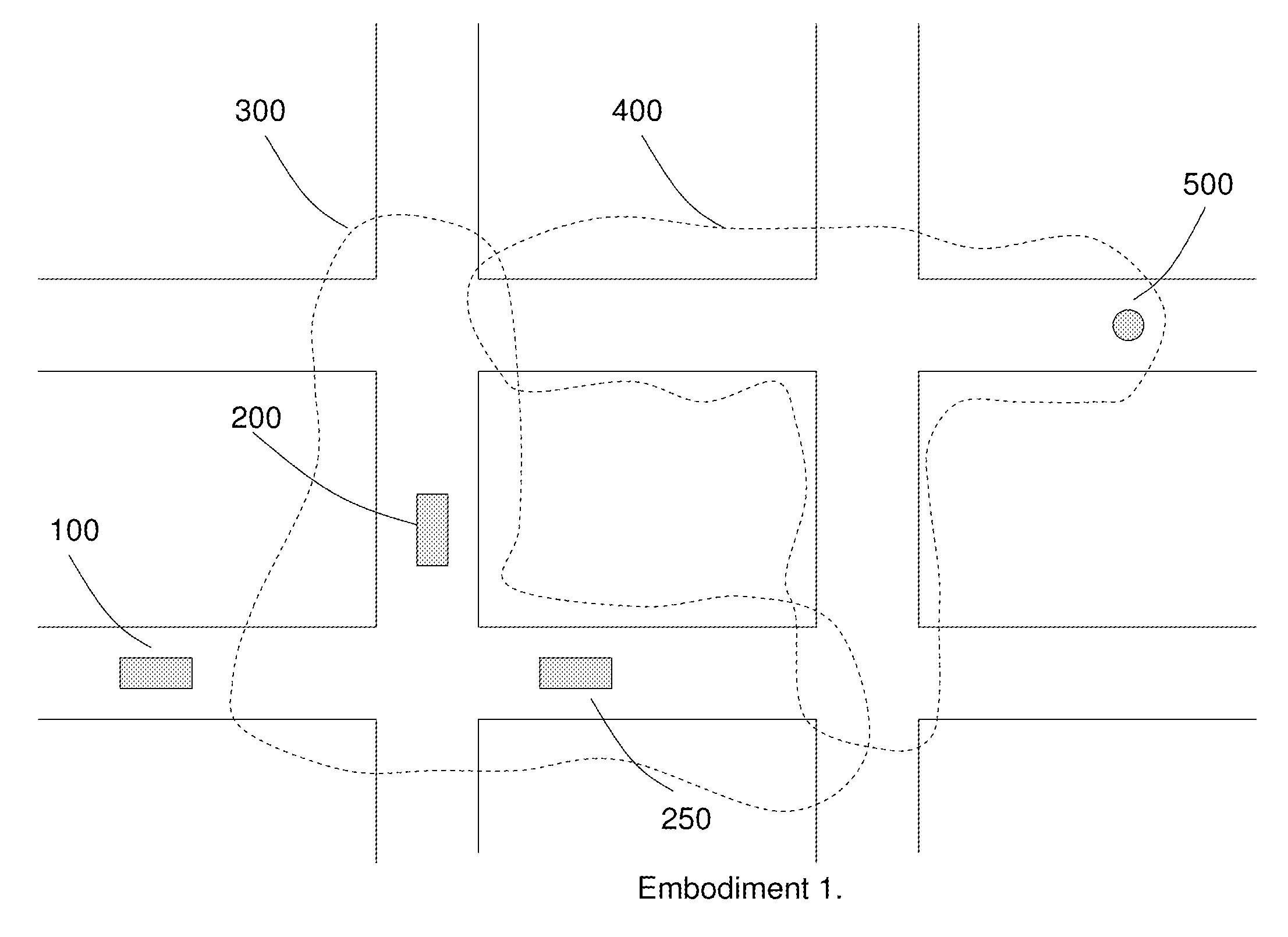Method and apparatus for an adaptive target vehicle notification system
a technology for target vehicles and notification systems, applied in traffic control systems, road vehicles, traffic control, etc., can solve the problems of ineffective use of newer vehicle data-links, limited effectiveness of notification systems that rely on breaking through or working on these channels, etc., and achieve the effect of preventing false alarms and short period of tim
- Summary
- Abstract
- Description
- Claims
- Application Information
AI Technical Summary
Benefits of technology
Problems solved by technology
Method used
Image
Examples
first embodiment
[0064]FIG. 7 shows the invention with an emergency response emergency response vehicle 100 traveling to a reported incident 500. The position of emergency response vehicle 100 may be known using any one of a number of vehicle tracking techniques, including GPS, multilateration, and the like. Position of emergency response vehicle 100 may then be reported via cellular or RF link to a processing center. The processing center may comprise an off-site processing center run independently of fire and emergency services, (e.g., by contractor) or may be integrated into a cellular network, or may be part of a system marketed and sold to fire and emergency services providers (municipalities and the like). Alternately, computation of position and transmission of warnings to motorists and bystanders may be performed using equipment onboard emergency response vehicle 100.
[0065]In the scenario of FIG. 7, it is unknown as to whether the driver of emergency response vehicle 100 will take a left tur...
second embodiment
[0070]In the invention, shown in FIG. 8, the route of the emergency response vehicle 100, 200 is either estimated or known and the zone between the emergency services and the incident 500 has been determined 300. As the emergency services vehicle proceeds along the route, calls are made to intervening users / vehicles 400, triggering siren ring-tones alerting them to the approach of an emergency services vehicle. Based on a-priori information and general location of the users 400 it is determined they are vehicles and must be notified. Other cell phone users 600, based on their a-priori information may be determined not to be possible intervening vehicles, for example they may be office workers in adjacent buildings or high above in office buildings. Therefore, calls or notifications will not be made to those cell phones. A-priori information includes 3-D position (i.e., including height) and the velocity of a track of the cell phone over a short period of time.
third embodiment
[0071]In the invention, shown in the flowchart in FIG. 9, once an incident is reported, the emergency vehicle is dispatched 110. Traffic flows in the intervening zones are determined, using average velocity and dwell time of users 120. If there is an intervening user or users in the zone of interest, 130, the user is determined to be a vehicle or not based on velocity, a priori information, height, and other information, 140. The user is then notified by sending a message such as an SMS, call, or PTT, to cause the siren or similar ring-tone on the mobile device to activate, 150. The system will continue to notify users until the destination of the emergency vehicle is reached 160, 170. Notification of users in step 150 may be staggered such that alarms are not sent to vehicles until the emergency equipment is within a predetermined distance of the user.
PUM
 Login to View More
Login to View More Abstract
Description
Claims
Application Information
 Login to View More
Login to View More - R&D
- Intellectual Property
- Life Sciences
- Materials
- Tech Scout
- Unparalleled Data Quality
- Higher Quality Content
- 60% Fewer Hallucinations
Browse by: Latest US Patents, China's latest patents, Technical Efficacy Thesaurus, Application Domain, Technology Topic, Popular Technical Reports.
© 2025 PatSnap. All rights reserved.Legal|Privacy policy|Modern Slavery Act Transparency Statement|Sitemap|About US| Contact US: help@patsnap.com



